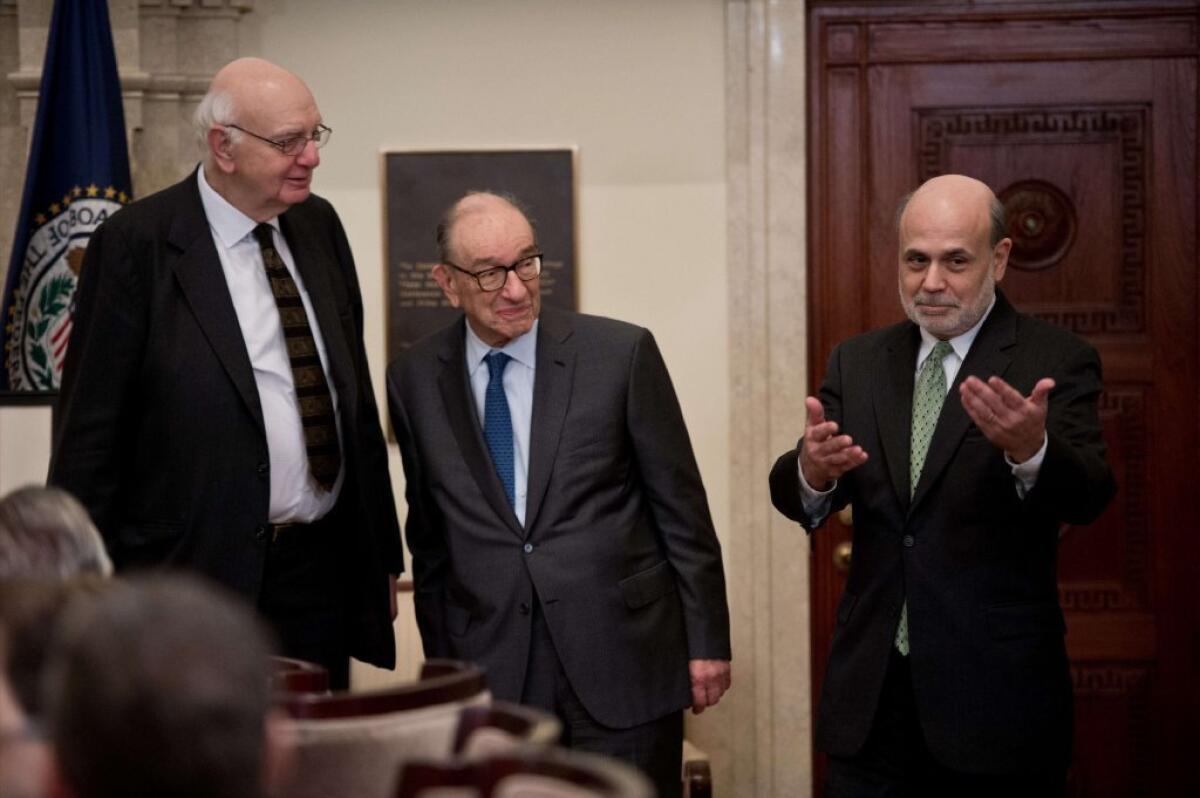Bernanke extols virtues of a transparent Fed

- Share via
WASHINGTON -- As Ben S. Bernanke nears the end of his term as Federal Reserve chairman, he is talking more about what may be one of the enduring legacies of his eight-year tenure: the Fed’s dramatically expanded communications with the public.
These have included instituting quarterly news conferences by the chairman, among other regular public appearances, and providing an explicit target on inflation and thresholds for Fed policy actions.
On Monday, in remarks at a gathering to mark the 100th anniversary of the law that established the Fed, Bernanke described these changes as an “ongoing revolution in communication and transparency” at the central bank, which over most of its history has operated in great secrecy.
Bernanke said improved transparency and communication have helped make Fed policies more effective. But most importantly, they are crucial, he said, to ensuring the accountability of the institution to the public and elected representatives, some of whom argue that the Fed still isn’t open enough.
This week the spotlight will be on Bernanke and the Fed. The chairman and his colleagues meet Tuesday and Wednesday for their last monetary policy meeting of the year. Their main focus: whether to begin reducing their $85-billion-a-month bond-buying stimulus.
The program is aimed at holding down long-term interest rates to stimulate economic growth and help lower the unemployment rate. Economists are divided on whether the Fed will initiate the so-called tapering this week or wait until the first quarter of next year.
If the Fed decides to taper, one action policymakers could take to offset the potential hit on Wall Street is to reassure investors by tweaking its “forward guidance” communication to stress that the Fed intends to keep short-term interest rates near zero for a long time.
Previously the Fed has said it probably wouldn’t begin raising short-term rates as long as the unemployment rate stays above 6.5% and inflation remains under control. Some analysts say that unemployment threshold could be lowered to 6%. The current jobless figure is 7%.
Also this week, the Senate is expected to vote on the nomination of Janet L. Yellen to succeed Bernanke when his term as chairman expires at the end of January.
Yellen, a former UC Berkeley professor who has been the Fed’s vice chair since October 2010, is expected to win Senate confirmation handily, although it’s unclear whether she will muster more than the 70 votes that Bernanke received about four years ago when he was confirmed for his second term as chairman.
ALSO:
U.S. economic recovery is expected to gain strength in 2014
Regulators unveil final ‘Volcker rule’ to curb bank risk-taking
The return of the debt limit crisis?
More to Read
Inside the business of entertainment
The Wide Shot brings you news, analysis and insights on everything from streaming wars to production — and what it all means for the future.
You may occasionally receive promotional content from the Los Angeles Times.











